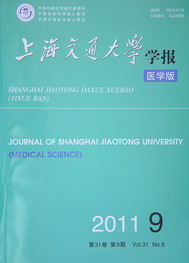Objective To investigate the effects of sevoflurane preconditioning and postconditioning on myocardial reperfusion injury under cardiopulmonary bypass in infants undergoing surgery for congenital heart disease. Methods Sixty children undergoing surgery for ventricular septal defect were randomly divided into control group (no inhalation anesthetics during the surgery), preconditioning group (inhalation of 1.5 MAC sevoflurane for 20 min before aortic cross clamping), postconditioning group (inhalation of 1.5 MAC sevoflurane for 20 min after aortic cross unclamping) and preconditioning+postconditioning group (inhalation of 1.5 MAC sevoflurane for 20 min before and after aortic cross clamping respectively), with 15 patients in each group. The time of aortic cross clamping, time of cardiopulmonary bypass, time of operation, time of mechanical ventilation, duration of stay in cardiac intensive care unit (CICU) and duration of hospital stay were recorded and compared. The mass concentrations of myocardial injury markers of troponin I (cTn-I), myoglobin (Mb) and creatine kinase isoenzyme (CK-MB) were determined after anesthesia induction (T0), before cardiopulmonary bypass (T1), at the end of cardiopulmonary bypass (T2), and 1 h, 6 h, 12 h and 24 h after cardiopulmonary bypass (T3, T4, T5 and T6 respectively). Results There was no significant difference in time of aortic cross clamping, time of cardiopulmonary bypass, time of operation, time of mechanical ventilation, duration of stay in CICU and duration of hospital stay among groups (P>0.05). The plasma mass concentrations of cTnⅠ, Mb and CK-MB at the time points of T2 to T6 were significantly higher than those at the time point of T0 in each group. The plasma mass concentrations of cTnⅠ, Mb and CK-MB at the time points of T3 to T5 in preconditioning group, postconditioning group and preconditioning+postconditioning group were significantly lower than those in control group (P<0.05). There was no significant difference in the plasma mass concentrations of cTnⅠ, Mb and CK-MB at each time point among preconditioning group, postconditioning group and preconditioning+postconditioning group (P>0.05). Conclusion Both sevoflurane preconditioning and postconditioning can relieve myocardial reperfusion injury under cardiopulmonary bypass in infants undergoing surgery for congenital heart disease, while the combination of them may not bring additional benefit.

